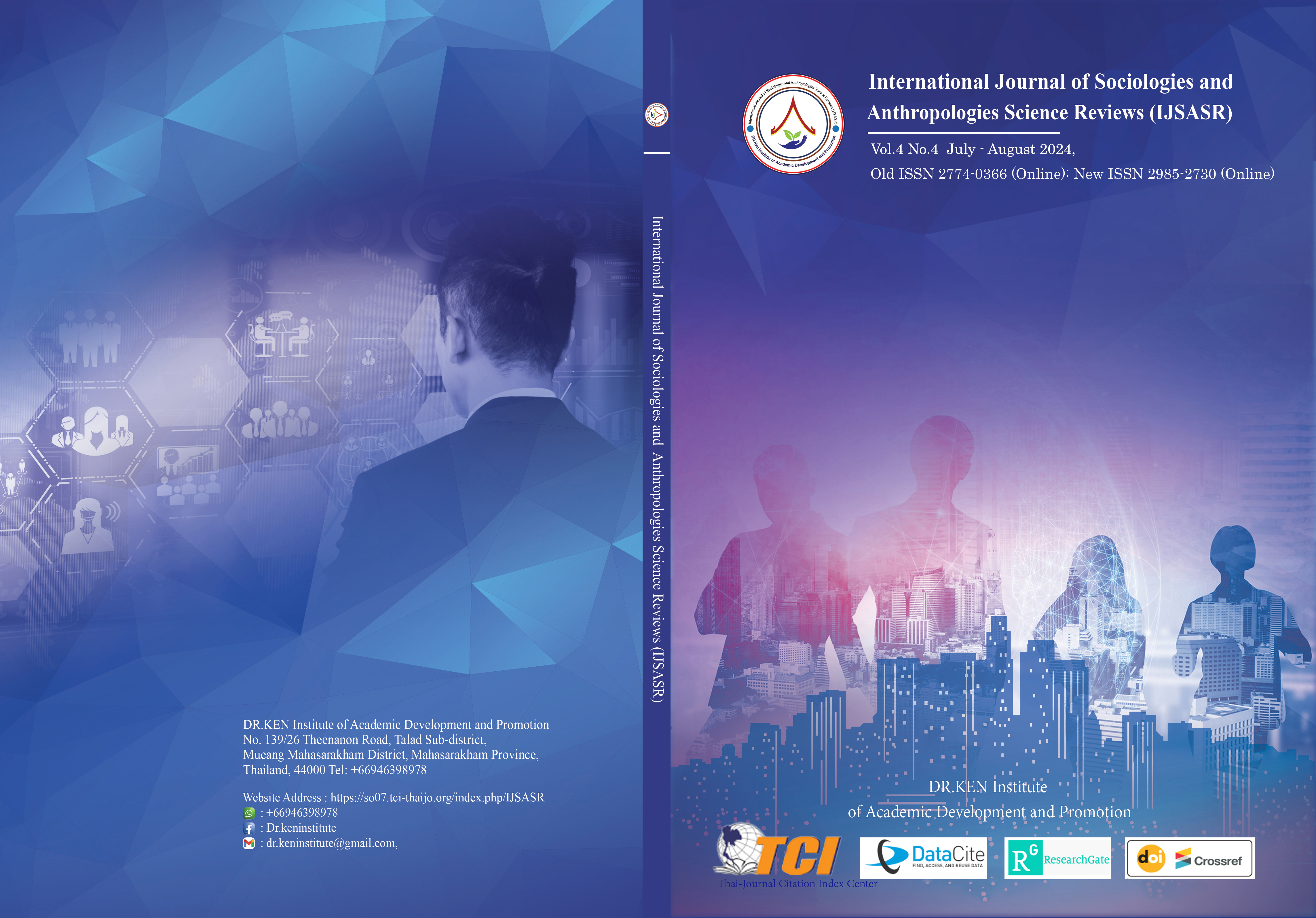Research Review On The Formation Mechanism of Architectural Designers’ Creative Deviance
Main Article Content
Abstract
Background and Aims: In the realm of construction project management and standardized design processes, enterprises encounter challenges in fostering innovation. Of particular interest is transgressive innovation behavior, a less understood form of autonomous innovation that has drawn scholarly attention. Innovators employ various strategies to advance their ideas, driving innovation forward while presenting management and risk-related hurdles. Understanding the factors and conditions influencing transgressive innovation behavior is paramount for effective management and risk reduction.
Methodology: This study, grounded in the Theory of Planned Behavior, delves into the realm of architectural designers to investigate how attitudes, norms, and behavior control influence transgressive innovation intentions and behavior, especially under the influence of tasks. Survey data collected from Jiangsu, Zhejiang, Shanghai, Guangdong, and Fujian provinces (269 valid responses) reveal that proactive personality, risk preference, organizational support, and an innovative atmosphere positively influence transgressive innovation intentions, while factors such as failure tolerance and uncertainty avoidance have negative impacts. The study also uncovers that transgressive innovation intentions mediate these relationships, and task complexity acts as a moderator between intentions and behavior.
Results: Given the backdrop of higher education and lower innovation success among architectural designers, this research explores the facilitating factors behind transgressive innovation, contributing to existing literature by reviewing concepts, and measurement methods, and constructing a model grounded in the Theory of Planned Behavior. Furthermore, it extends the application of theory by proposing and verifying task complexity as a moderator.
Conclusion: In light of the paradox of high education but low innovation success, this study aims to investigate the factors that promote transgressive innovation among architects. It seeks to deepen our understanding of innovation dynamics in architecture by employing the Theory of Planned Behavior, critically analyzing existing literature, and adding task complexity as a moderating variable. In the end, this research hopes to provide information that may help develop and maintain innovative practices in the architectural design industry, which could result in improved creative processes and products.
Article Details

This work is licensed under a Creative Commons Attribution-NonCommercial-NoDerivatives 4.0 International License.
Copyright on any article in the International Journal of Sociologies and Anthropologies Science Reviews is retained by the author(s) under the under the Creative Commons Attribution-NonCommercial-NoDerivatives 4.0 International License. Permission to use text, content, images, etc. of publication. Any user to read, download, copy, distribute, print, search, or link to the full texts of articles, crawl them for indexing, pass them as data to software, or use them for any other lawful purpose. But do not use it for commercial use or with the intent to benefit any business.

References
Ajzen, I. (2006). Constructing a TPB questionnaire: Conceptual and methodological considerations. Retrieved from https://people.umass.edu/aizen/pdf/tpb.measurement.pdf
Ajzen, I. (2019). Applying the theory of planned behavior to a measure of condom use intentions. The American Journal of Health Behavior, 23(4), 253-262.
Augsdorfer, P. (2005). Bootlegging and Path Dependency. Research Policy. Research Policy 34(1),1-11. DOI:10.1016/j.respol.2004.09.010
Chen, W. (2017). The inhibiting effect of transgressive innovation behavior on innovation: An external perspective. Journal of Organizational Change Management, 42(1), 56-73.
Duan, W., & Jiang, G. (2008). Review of Planned Behavior Theory. Progress in Psychological Science. 2, 315-320.
Jia, J. (2022). The dual effects of transgressive innovation behavior on counterproductive work behavior: The mediating role of psychological guilt and psychological entitlement. Personnel Psychology, 71(1), 87-104.
Liu, H. (2021). Exploring salient beliefs in the theory of planned behavior for knowledge sharing intention: A literature review. International Journal of Information Management, 57, 102284.
Song, Y. (2020). Environmental influences on transgressive innovation behavior: The moderating role of employee autonomy. Journal of Applied Research in Innovation and Entrepreneurship, 15(2), 234-248.
Wang, F. (2018). Operationalizing salient beliefs in the theory of planned behavior for co-creation willingness. Journal of Marketing Analytics, 6(3), 162-178.
Wang, H. (2019). Team attitudes toward transgressive innovation behavior: A maturity-phase perspective. Journal of Innovation in Organizations, 18(4), 521-537.
Wang, H. (2020). The role of high innovative self-efficacy in promoting transgressive innovation behavior. Journal of Organizational Psychology, 32(2), 87-104.
Wei, H. (2017). The impact of transgressive innovation behavior on individual creative performance. Journal of Innovation Management, 5(1), 42-58.
Yu, L. (2021). Influence of supervisor support on risk-taking willingness and transgressive innovation performance. Management Science Journal, 27(6), 112-129.
Zhang, W. (2021). The impact of team collaboration and experimental culture on the relationship between transgressive innovation behavior and team creative implementation. Journal of Team Dynamics, 30(3), 189-204.
Zhao, B. (2013). Identifying salient beliefs about transgressive innovation behavior using grounded theory. Journal of Business Research, 66(1), 92-98.
Zhao, B. (2019). Resources deployment and its impact on transgressive innovation behavior. Journal of Applied Psychology, 45(3), 321-335.
Zheng, C., & Hu, P. (2018) Research on the Relationship between Organization Support and Bootleg Innovation in Internet Firms--The Mediating Effect of Job Satisfaction. West Forum on Economy and Management, 2018, 29(2): 72-80
Zou, C. (2020). Effects of high-intensity transgressive innovation on turnover intention: The mediating role of workload. Journal of Applied Psychology, 48(5), 632-648.






